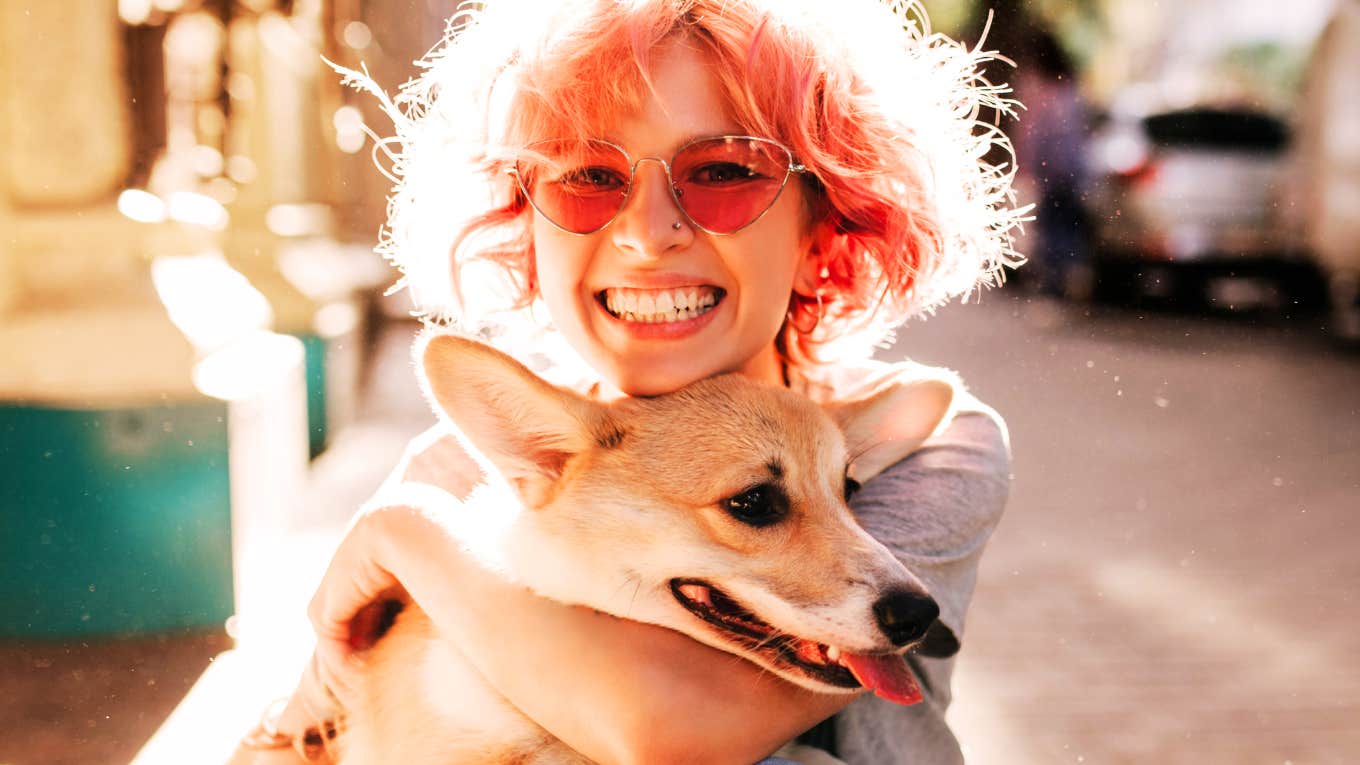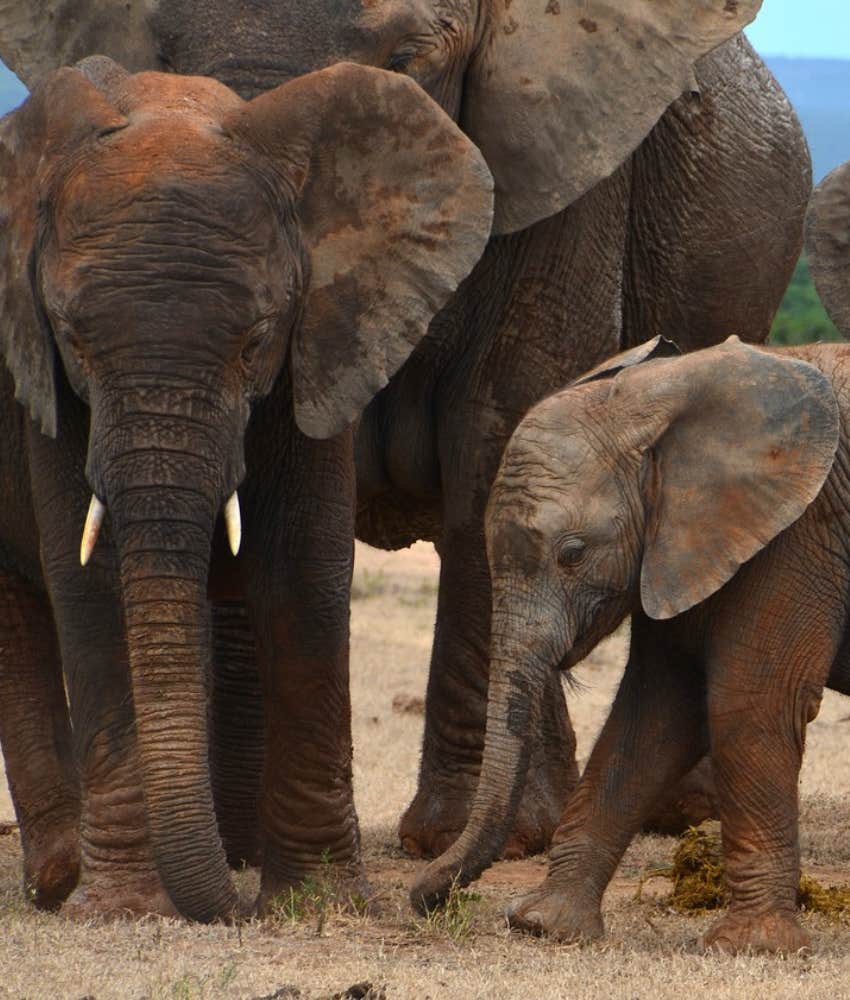9 Adorable Facts That Prove Animals Really Do Love Us Back
Animals are capable of deep, unconditional love.
 LOOK | Canva
LOOK | Canva If you've ever known the love of an animal, you know the feeling. It's playing a game of fetch with your dog when you're happy or cuddling with your cat when you're sad. It's a wet nose nuzzling your cheek or the sound of a concerned whimper. It's looking into a pair of wide, empathetic eyes that understand you on a deeper level. If you're an animal lover, you know this already to be true: animals are capable of deep, unconditional love.
In other words, domesticated animals do love their owners. (How's that for feel-good science?) In case you need more convincing, here are other research-backed facts that prove animals really do love us back and that we're not the only animals on the planet who possess the cognitive and emotional capacities to love.
Here are 9 adorable facts that prove animals really do love us back:
1. Wolves howl for their missing pack members
If you've ever heard a wolf howl and wondered why, you could blame forlorn love. Researchers at the Wolf Science Center and the University of Veterinary Medicine in Vienna set out to observe packs out in the wild to answer this question. After years of study, they started to realize that wolves cry out in distress when they miss an absent member of their pack.
The level of anxiety caused by the separation, as determined by measurements of the stress hormone cortisol in the wolves' saliva, did not affect the howling. That indicates it was the bond between pack members — not anxiety — that caused the crying.
2. Elephants die of broken hearts and bury their loved ones
 DKunert from Pixabay
DKunert from Pixabay
Elephants are among the most emotional creatures of the animal kingdom, and one of their most compelling acts of love is their expression of grief for a lost loved one. These gentle giants have been known to die of broken hearts after the death of a mother, child, friend, or mate. They stand over the remains, caressing them with their trunks, smelling them, and letting a moment of silence pass that lasts between several minutes to several days.
Not only do they show their respect for their dead companions, but they will even go so far as to "bury" the bodies under foliage. And it doesn't just stop within their species. When conservationist and "elephant whisperer" Lawrence Anthony died, the herd of wild South African elephants he rehabilitated instinctively marched over 12 hours to reach his house and say goodbye.
They are considered by many researchers to be the only animals — besides humans — to hold funerals.
3. Orca brains are more emotionally developed than human ones
Despite their name, killer whales are not the beasts of the ocean they've been painted to be. According to research highlighted in the eye-opening documentary about orca whales raised in captivity at SeaWorld, Blackfish, orcas particularly have a part of the brain tied to emotional intelligence that is, in some ways, more developed than humans.
According to the film's featured neuroscientist, Lori Marino, if you put an orca whale into an MRI scanner and look into its brain, you will see that parts of the limbic system — the layers of interconnecting tissue that process emotions — have grown elaborately compared to those in the human brain. The whales have a level of social culture that is unmatched by other mammals, including humans.
4. Cats blink to give a 'kitty kiss'
Have you ever seen a cat, lounging languidly in a sunny spot in the living room, meet eyes with you across a room and blink slowly? For a predator, its eyesight is an important asset for survival. In cat body language, it's been proven that a slow, deliberate blink is an expression of total trust, vulnerability, and friendliness.
5. Dogs yawn to show love to their owners
Similar to a cat's blink, a dog's yawn is a sign of adoration for their owners. Teresa Romero and her colleagues from the University of Tokyo studied 25 domesticated dogs and their yawning human companions. They found that 54 percent of the pets yawned contagiously when their owners did, indicating that the bond between dogs and their owners produced a stronger response.
To debunk the idea that dogs yawn when they're stressed, they used a heart rate monitor to measure the levels of stress in the dogs during the experiment. The results? There was no significant increase in heart rate, meaning the pups' yawning did not appear to be stress-related.
6. Otters hold hands to keep from drifting apart at sea
 Christel SAGNIEZ from Pixabay
Christel SAGNIEZ from Pixabay
Not only are mating pairs of otters big on cuddling and napping, but they look out for each other ... even in their sleep! As seen in photographs taken in the wild and captivity, otters are known to hold hands in groups — called a raft — while they eat, sleep, and rest, to prevent families from losing each other. They're even known to wrap sea plants around them to secure the bond.
7. Shingleback skink lizards date each other
They aren't the prettiest in the animal kingdom, but these lizards are committed partners. Unlike some other species (ahem, humans included) who rush into things, a male shingleback skink will court a female he likes for months — strutting by her side, licking and nudging her affectionately — before they mate. This prolonged period of courtship is seldom observed in other reptiles. If the female accepts him, the reptilian couple will mate again and again every breeding season, sometimes for as long as 20 years.
Research done by C. Michael Bull found that these reptiles are monogamous more often than not. And when one dies, its surviving partner will stay beside the body for days, tenderly touching it. Whether it's to revive it or simply to grieve, experts are not sure. Still, the sentiment is powerful.
8. French Angelfish dance when reunited
No one puts these fish in the corner. These fish mate for life and spend most of their time swimming side by side in their coral reef homes. Not only that, but when French angelfish couples reunite after being separated, they joyfully encircle one another round and round in a romantic behavior that experts call "carouseling."
9. Caged rats empathize with each other
Calling someone a rat is not exactly a term of endearment ... but after learning about the true nature of their loyalty to one another, you may think of them differently.
Dr. Peggy Mason, a neurobiologist at the University of Chicago, and her colleagues conducted a model test to see whether rats would be driven by empathy to help each other. For the hour-long test session, scientists put pairs of rats together in cages: one rat roamed freely while the other was restrained in a clear tube within the confines of the cage, which could only be opened by the "free" rat. Most rats learned to open the door and free their companion.
"They then did what we refer to as a celebration," Mason says. "The trapped rat runs around the arena, and the free rat appears excited and runs after the trapped rat." Then, the scientists decided to put their hunger to the test using two restrainers: one with a rat and another containing 5 chocolate chips.
Scientists were shocked to see that the free rodents always freed their companions and even shared the snack with them. "All of this tells us that acting on empathic feelings to help another in need is a biological and a neurobiological mandate," Mason said in the study. "It's in our brain." They've been known to free each other from their cages.
It was hardly a surprise that Paul Zak, a professor at Claremont Graduate University in California, proved what we've known all along — animals are capable of great acts of love.
Professor Zak conducted a series of behavioral experiments to measure the levels of oxytocin, known as the "hormone of love," released when pets interacted with other animals and humans. The research concluded that animals release this hormone, similar to humans, when forming bonds with friends.
"The only time I have seen such a surge in oxytocin in humans is when someone sees their loved one, is romantically attracted to someone, or is shown an enormous kindness," admitted Zak. "Given that oxytocin came about to help bonding, it seems that domesticated animals form bonds and feel love in the same way we do."
Alexandra Churchill is a digital editor who currently works for Martha Stewart Living. Her work has been featured on numerous sites, including The Huffington Post, Her Campus, USA TODAY College, and Northshore and Ocean Home magazines.

